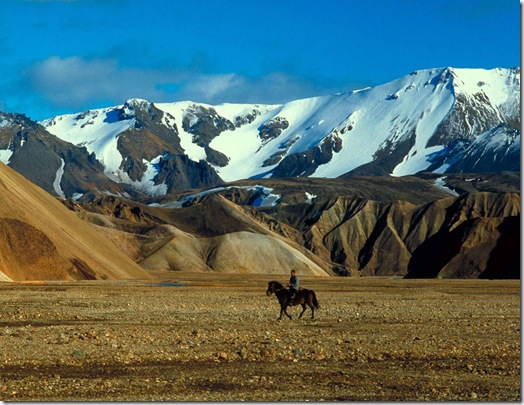In 2008, Forbes.com published a list of the World’s Healthiest Countries.
First, let’s take a look at how they did their judging.
Behind The Numbers
- They looked at the latest available health and environmental statistics for every nation, from sources such as the World Health Organization, the World Bank and the UN.
- Due to incomplete data, only the 138 nations with statistics in every measure were ranked.
- That’s why you won’t see countries like Monaco, Norway, Malta, Belgium, Luxembourg, New Zealand, Ireland and Andorra–all of which had a shot of cracking the top 15 were they not missing information.
So as you can already see, the study does have its’ flaws-we should take everything with a grain of salt (as always!).
The statistics examined:
- Estimated air pollution in world cities;
- the percentage of a country’s population with access to improved drinking water and sanitation;
- infant mortality rates;
- the rate of prevalence of tuberculosis;
- the density of physicians–generalists and specialists–per 1,000 people;
- undernourishment rates; and
- healthy life expectancies for men
It is interesting to note what the statistics were based on and also that factors such as stress, percentage overweight, etc were not included in these analyses.
And here are the Top 15 Healthiest Countries in 2008 according to Forbes.com starting with 15th place and working up to the healthiest city:
15th place: France
A stellar health care system and clean air landed France on the list. Working against it: the worst wastewater treatment standards of the top 15. Its tuberculosis rate–11 cases per 100,000 people, one of the highest on the list–also held it back. But there’s good news for the country’s chronically ill; France’s high physician density measurement: 3.37 per 1,000 people.
14) Spain
13) Czech Republic
12) Israel
11) U.S.A.

The U.S. spends over 15% of its gross domestic product on health care–with little to show for it. In 2006, almost 16% of the population lacked health insurance. Still, of the 15 countries on the list the U.S came out on top when measuring infant mortality rate. The country also has the second-highest healthy life expectancy. What’s more, air pollution is relatively low, and the U.S. boasts one of the world’s lowest TB rates.
10) Netherlands
9) Austria
8) Canada

The Great White North has the list’s lowest number of doctors per capita, or 2.1 for every 1,000. Still, Canadians enjoy one of the world’s longest life expectancies and one of the lowest TB rates, or 3.6 per 100,000 people. A relatively high infant mortality rate, 5 deaths per 1,000 live births, also lands Canada in spot eight.
7) Denmark
6) Australia
5) Switzerland
4) Germany
3) Finland
2) Sweden
1) Iceland

Icelanders enjoy one of the world’s highest healthy life expectancies (72 for men and 74 for women), giving them plenty of time with the country’s mountains, glaciers, volcanoes, waterfalls and coastal lands. The country is also one of the world’s least polluted. Ensuring Iceland’s top position is the country’s TB prevalence (2.2 per 100,000 people) and infant mortality rate (two deaths per 1,000 live births), both the world’s lowest. The country also has one of the highest physician densities, 3.62 per 1,000 people.
Today’s question:
What do you think of the study’s results? Do you think the study should include more factors? If so, what are they? Do you think your country should be higher on the scale (or lower)?
Personally, I was a bit surprised to see how few statistics were used when analyzing the countries. I would have liked to see stress, # overweight, health conditions (diabetes, heart disease, cancer, etc) included in the analyses. However, coming from a research background I know how hard obtaining complete statistics can be- sometimes a complete nightmare!! Especially when you are including countries that aren’t industrialized and technology oriented. It appears that WHO, among others, need to devote more time to obtaining a wider variety of stats. I guess in time that will come.
It does NOT surprise me that Canada ranked lowest for doctors!! It is extremely hard to find a doctor when you move to a city, especially for those people living in Northern Canada. I think I heard that many Medical schools now require doctors to spend their first year (or more) up north as part of their internship. I can certainly see why! Many of our doctors end up going to the US where they can make much more money.
Oh- and I would LOVE to go to Iceland someday!!!! :D

See you tonight for some fun Summer Glow clues!!!




Ooooh! I would love to live in Iceland for a short period of time. It looks so gentle and relaxing :-) Have a great day. I’m so excited for tomorrow!
Look at that picture of the most beautiful city in the world, my city, Pittsburgh. :)
Well, I’m from Finland and I really think that our country and other Northern Europe countries like Sweden and Icelad are perfect places to live.
However, I don’t believe in these kind of researches. There just are things you can’t rate. For example, Finland has one of the highest suicide rates in the world.
haha, love that the #8 for Canada turned into the sunglasses smiley for you, how appropriate :-D
I really thought Australia would be on the to–
Oh.
Right. Drinking habits. Well aside from that, they’d be atleast on the top 15, right? o__o;;
I really want to move to Finland. Okay, I have only met ONE person from Finland that was fun to talk to (and I found absolutely adorable because he didn’t know what poptarts were! So cuuuute~!!), the rest are usually pretty boring, but the country is beautiful and very peaceful so I’ve heard.
-sigh- Either that or Australia. I’m seriously convinced Australia has to be on the fairly healthy side. I’ve seen so many vegans online from Australia. They’re hogging all mah vegan goodies. >: ( You too, Canada! -shakes angry fist-
These pictures are BEAUTIFUL! Thanks for the great info!
I’m really surprised that Japan isn’t on that list… I guess they must have been left off because of incomplete information? Or because this survey seems to only really include western countries??
Anyway, Japan should be on there:
High life expectancy
Excellent medical care
Low obesity rates
Very healthy traditional diet (compared to the majority of western countries)
etc…
The only things that I can see that would keep it down are that along with low obesity rates, the number of people who are underweight (according to BMI, which is a very flawed measure for this kind of thing) is much higher than in most western countries, with around 12% of women and 6% of men being underweight (compared to around 3% of women and 1 or 2% of men in the UK). Also, since the traditional Japanese diet is quite high in salt, there is quite a lot of high blood pressure etc. Still though, I’m pretty sure it deserves to be on that list.
I am however, not at all surprised that the UK isn’t on there. Hahaha.
Ahh that lovely picture under #11 is Pittsburgh! America’s most livable city (and my hometown!)
I would love to see this survey with # overweight/underweight included. I think that would change drastically the results,
We went to Iceland for my birthday in March. I wrote my first blog post about it! It was amazingly clean, gorgeous, and I have never felt so relaxed in my life! I have been to 9/15 of these, awesome!